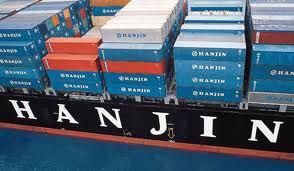
Research and Markets has announced the addition of the "South Korea Shipping Report Q3 2011" report to their offering. BMI continues to predict a reasonably good year
for the South Korean ports and shipping sector in 2011. BMI sees two major influences at work. First, macroeconomic growth will be solid, although lower than in 2010, and subject to some headwinds in the second half. Growth is being led by net exports, private consumption and government spending. The potential inhibiting factors in the second half concern the knock-on effects of economic disruption in Japan following the earthquake there in March; slower growth in China; and the impact of higher oil prices, particularly in an energy import-dependent country like South Korea.
As far as industry-specific factors are concerned, BMI are seeing some fluctuation in cargo volumes either side of the norm set by general economic growth. One of the key inhibiting factors here are the low container rates experienced on the Asia-Europe routes. This is leading some companies to refocus on drybulk business. On the plus side, however, BMI notes that foreign trade, much of which is conducted by sea, is set to grow significantly faster than GDP.
Headline Industry Data
• The total value of South Korea's trade (imports plus exports) is set to grow 7.3% in 2011, slower than the 15.7% surge registered the preceding year. Imports will lead the way (+7.8% growth) with exports a little slower (+6.7%).
• Busan, South Korea's largest port, will see gross tonnage growth drop to 2.6% (to 232.80mn tonnes), a deceleration on the 9% growth registered in 2010. Containers handled will expand by 2.3% to 14.502mn 20-foot equivalent units (TEUs), down from the 18.4% surge last year.
• At the port of Incheon tonnage will grow by 4.5% (down from 12.3% in 2010), while box traffic will grow 14.3% (down from 17.5% last year).
Key Industry Trends Korea Line Crisis Triggers Losses: Korea Line (KLC) has filed for receivership. Share prices collapsed by 60% in January 2011 (relative to their April 2010 peak) when trading was suspended. The shipping company was hit by the fall in box rates, and its difficulties were intensified because it was tied in to long-term charters for its vessels. The collapse had a ripple effect on other shippers, including Eagle Bulk of the US, which had to write off US$6.6mn in bad debts associated with KLC. DryShips of Greece was able to restructure the charters of three bulkers in a deal with KLC.
Hanjin Shipping, Maersk And CMA CGM Seek Rates Boost: The South Korean, Danish and French shipping companies all announced box rate increases on the Asia-Europe line effective from May-June, in the latest attempt to reverse downwards pressure caused by overcapacity. BMI notes that lines have been trying to push rates up since the beginning of the year with little effect. However, the author believe this concerted push could see rates increased, with peak-season surcharges set to follow in July, enabling shipping lines to push rates back past US$1,000 per TEU, a level they fell below in March 2011.
Source: Research and Markets
We use cookies to improve your experience. By continuing to use our site, you accept our Cookies, Privacy Policy,Terms and Conditions. Close X